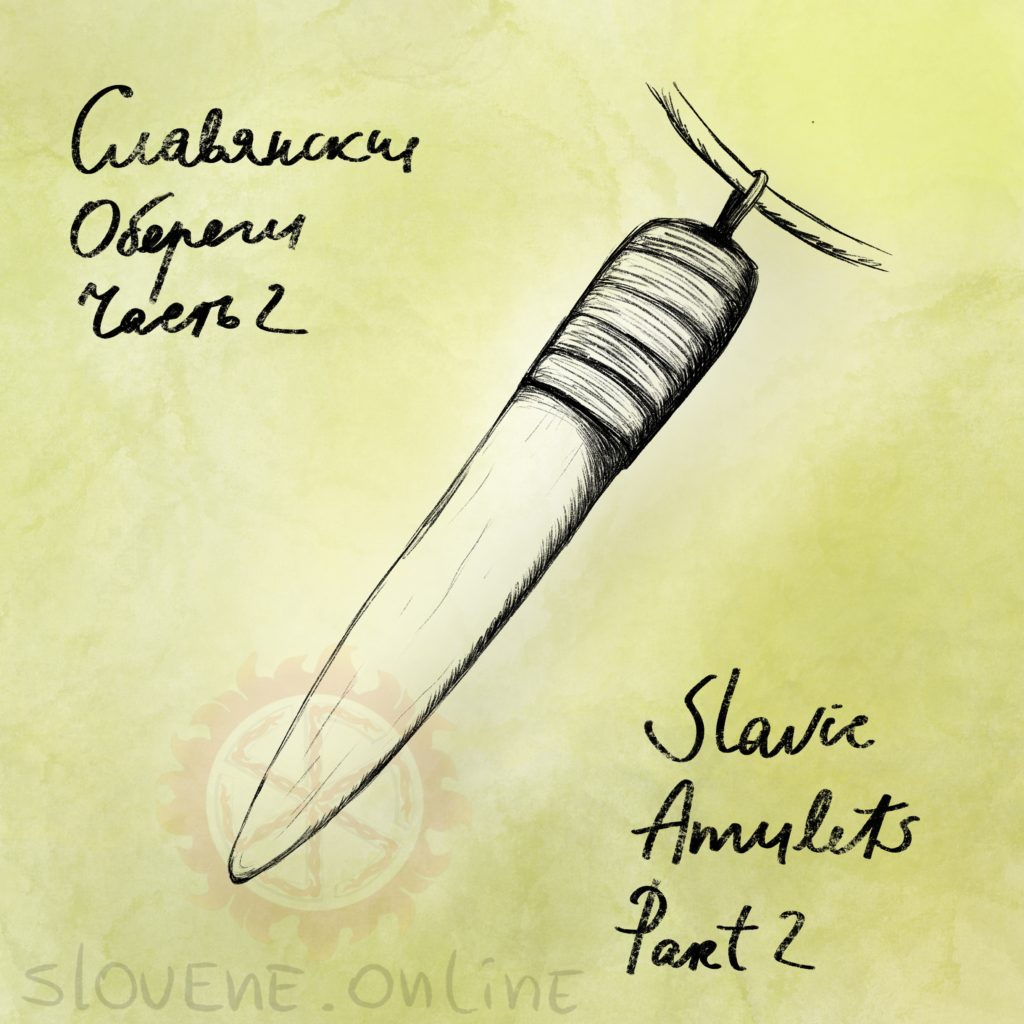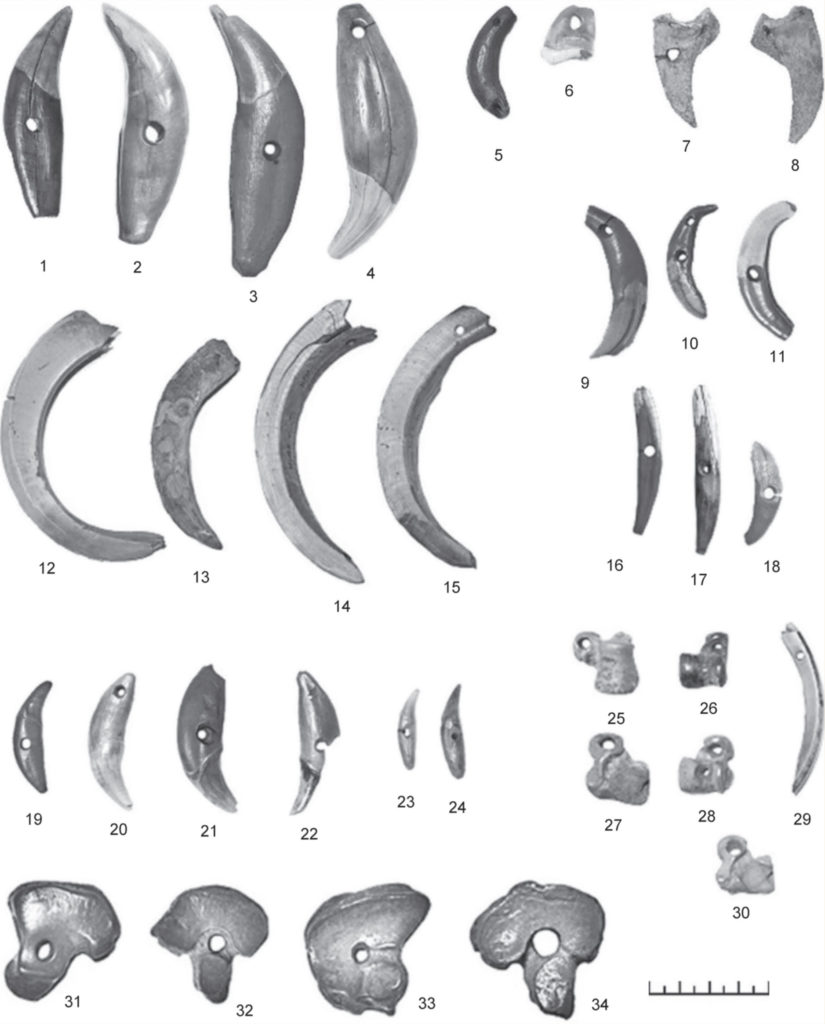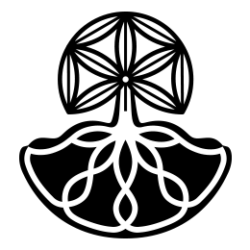A common rope used today, was also considered a talisman by the ancient Slavs. It protected from curses and even helped to neutralize evil spirits.
ꏍ
Before the wedding, the North Russian Slavs tied a rope (a belt or a fishing net) over the naked body of the bride and groom to protect them from evil spells. For the same purpose, the Serbs surrounded the bed of a woman in labor and a child with a rope. Slavs would also put a red rope or a ribbon on a hand of a child or a pregnant woman, as well as just a beautiful girl, to protect them from being cursed. In general, using rope as a belt, was one of the ways to create a magic circle, which ensured the inviolability and safety of the person in it.
ꏍ
Macedonians believed that a person could tie a vampire by throwing a noose around his neck with a reed rope. The Poles believed that a rope woven from nine bast strips was suitable for capturing Vodyanoi. They also were ready to chase away Mara, who came at night to strangle people, by beating her with a rope or a belt.
ꏍ
To be continued…
ꏍ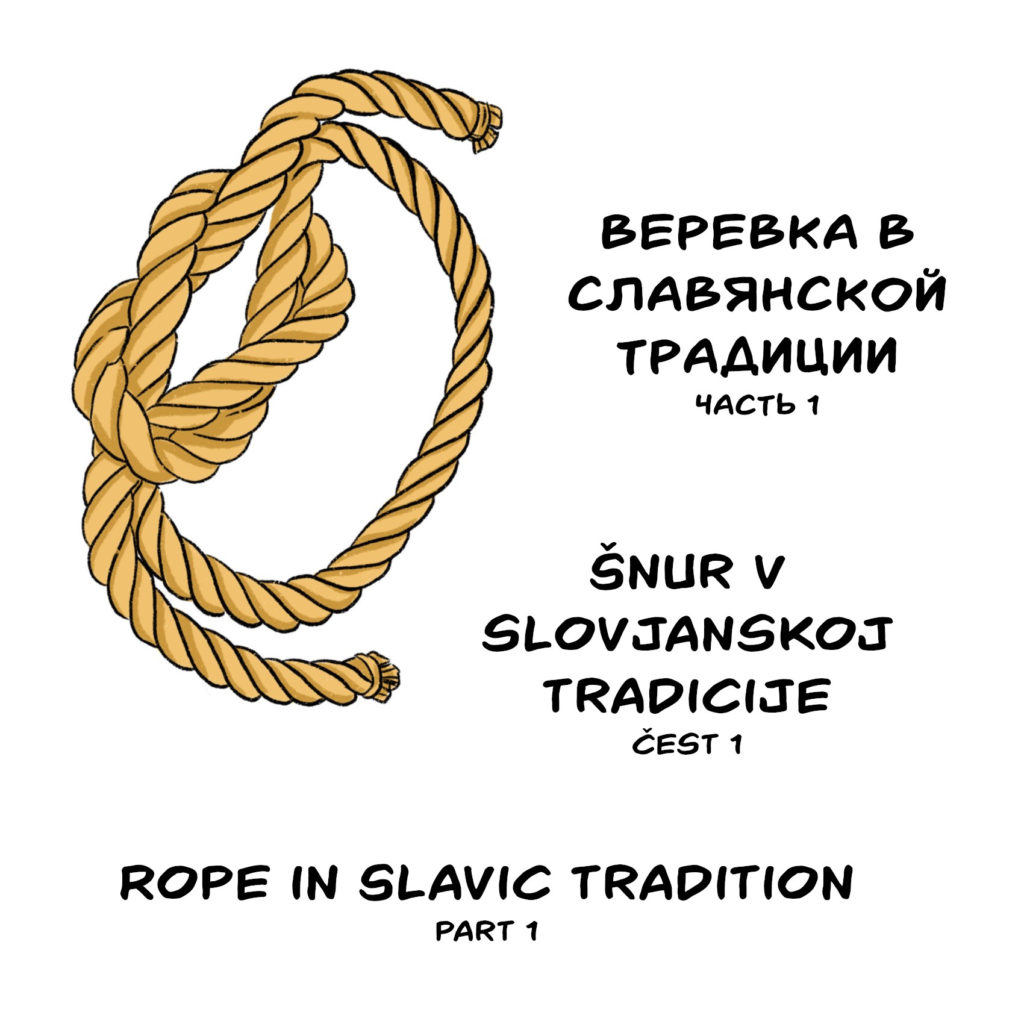
Comb in the Slavic tradition – Part 2
Slavs also used the comb in reproduction magic. Going to the first seeding, the Serbs and Macedonians would put it in a bag of seeds or stirred seeds prepared for sowing with it, so that the spike of wheat / rye would have “frequent grains” like the teeth of a comb. The Croats, before taking the cattle for sale, combed it and pronounced: “Koliko zubaca, toliko kupaca” (“How many teeth, so many buyers”). After combing the sheep, the Russians threw the broken comb and the wool back into the sheepfold so that animals would have more wool.
We continue to familiarize you with the customs and beliefs of the ancient Slavic people, while working on the animated fantasy comic book series. In such posts, as if jumping forward in time, we shed light upon and help to understand the events that will occur in our story … 😉
All Slavs used the comb as a talisman against evil spirits, curses, diseases, wild animals, etc. The Serbs protected newborns from Veshtitsa (Вештица – Witch) and other demons with one or two combs, put on both sides of a child head. Therefore, Veshtitsa would prick herself if tried to approach the baby. The Eastern Slavs used to put a comb or a spindle in a cradle so that a baby could sleep peacefully.
A comb was also used for hexing others. The Serbs for example, would put two combs on both sides of the road on the wedding day, and when the young couple passed, they connected and hid those combs: after that, the couple would have arguments for all their life. The Russians of the Novgorod region believed that sorcerers performed all their malicious actions with the help of a comb. The Macedonians believed that women who had violated the ban on work in the evenings, were drowned in the water or brushed with large combs by Karakondzhulas (Караконцол). Interestingly, the comb is an attribute of many mythological creatures: goddesses (boginka), mermaids, female water spirits, etc., who usually combed their long hair in a story.
Source: “Slavic Antiquities” – encyclopedic dictionary in 5 volumes by Institute for Slavic Studies of the Russian Academy of Sciences.
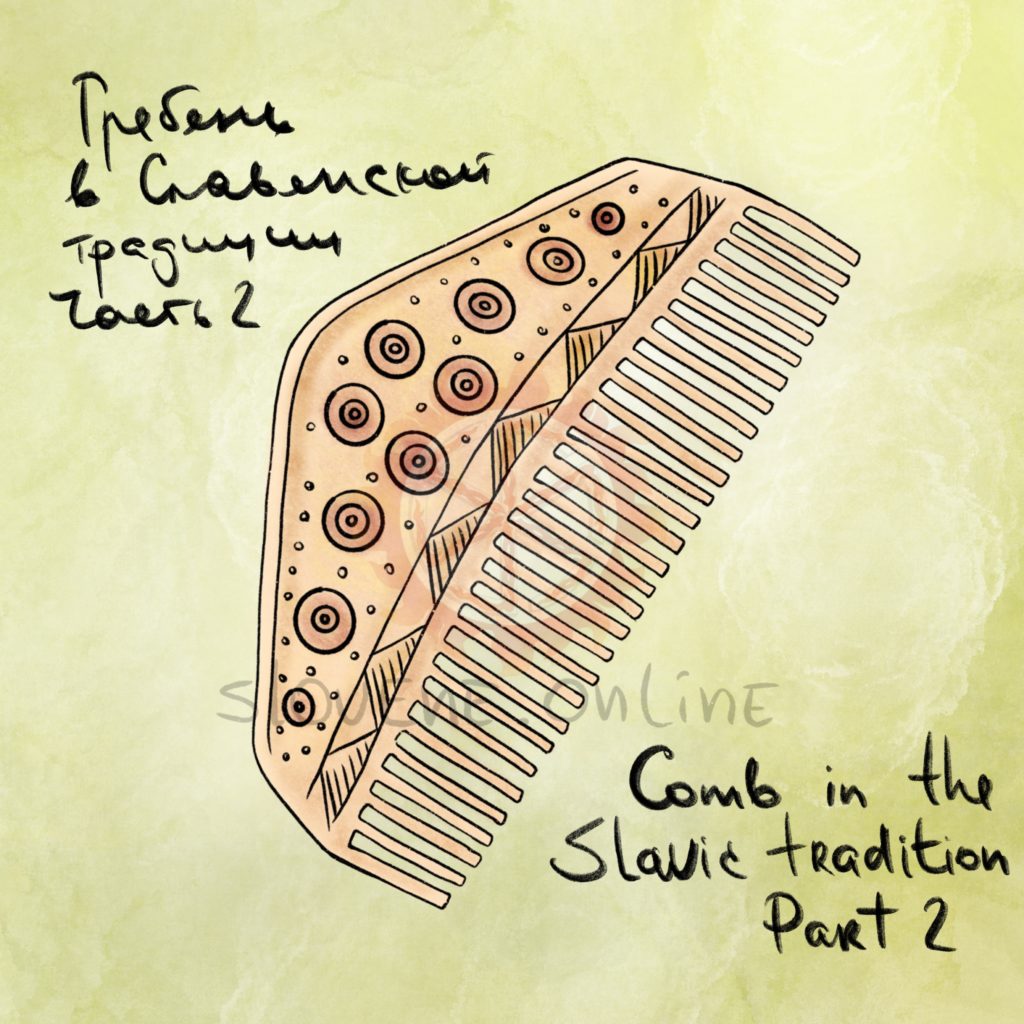
Slavic amulets – Part 4
Neolithic stone tools (“thunderstones”) were divided into two types: “thunder” arrows (mainly silicon arrowheads) and “thunder” axes and hammers (stone adzes and axes). Sometimes belemnites were also regarded as “thunder arrows”, but more typical name for them contained a “finger” in it (for example, Russians called them “Devil’s finger”, the name “God’s finger” was mostly used in Poland and Polesie).
We continue to familiarize you with the customs and beliefs of the ancient Slavic people, while working on the animated fantasy comic book series. In such posts, as if jumping forward in time, we shed light upon and help to understand the events that will occur in our story … 😉
The Slavs believed in the power of “thunder” stone tools as a talisman against evil spirits, jinxes and evil eyes. Ethnographers written down texts of many protective spells, which contained these objects as part of incantations. “Babushka-sorceresses”, who used thunderstones in healing magic, passed them down from generation to generation. Thunderstones were also talismans from thunderstorms and lightning: keeping them in the house protected from evil spirit entering home, and, therefore, shielded from a thunderbolt aimed at this spirit.
“Thunder arrows” were also carried as a personal amulet by both ordinary people and warriors in order to “defeat the enemy”. There was an interesting statement in the 18-century’s handwritten Healer Guidebook from the collection of the researcher Ivan Zabelin: “If someone carries a thunder arrow, he can defeat anyone with his strength, and no one can stand against him, even if they are stronger”. The amulet was worn on a string, in a pouch or sewn into clothes. Such ways of wearing amulets are known from the ethnographic materials of various Slavic nations.
This post was prepared based on the articles by E. A. Tyanina:
(1) “Tools of the Stone Age in the cultural layer of medieval Novgorod: pagan cult objects or random things?” // Novgorod and Novgorod land. History and archeology, 2008;
(2) “The discussion of the Perun’s cult in the Novgorod land (based on records of the archaeological research of Novgorod)” // COLLOQUIA RUSSICA; Series I, vol. 8; “Religions and beliefs of Rus’ (9th–16th centuries)”; Krakow 2018
Additional sources:
(3) “Slavic Antiquities” – encyclopedic dictionary in 5 volumes by Institute for Slavic Studies of the Russian Academy of Sciences.
(4) M.V. Sedova, “An amulet from ancient Novgorod,” Soviet Archeology, No. 4, 1957
(5) A.N. Afanasiev, “Poetic views of the Slavs on nature,” vol. I., 1865
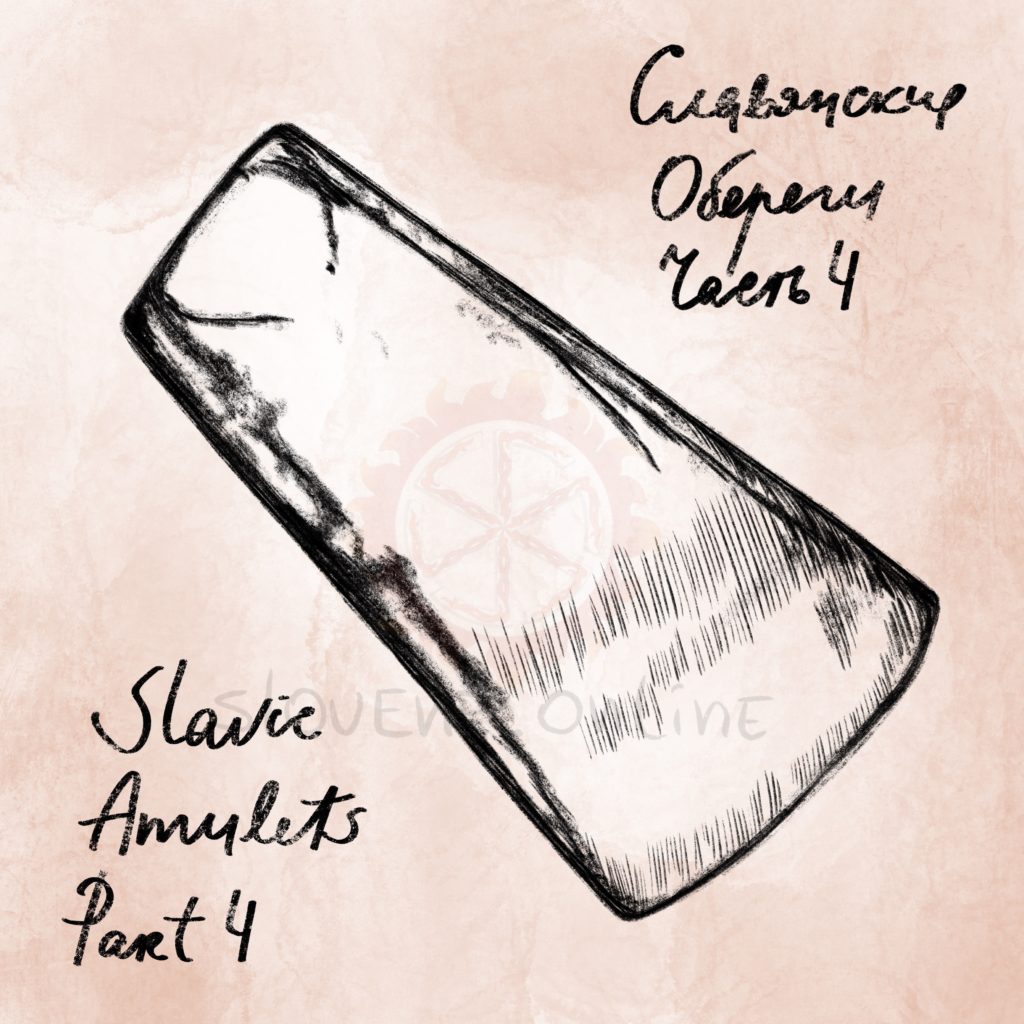
Slavic amulets – Part 3
The medieval tradition of worshiping paleolithic age stone tools has a pan-European spread and connects them with a Thunder cult. They were believed to be the divine weapon of the Thunderer, which he throws from heaven during a thunderstorm to strike the evil. It was widely believed that when a thunder struck, a “thunder arrow” (“thunderstone”) would go deep into the ground and after a few years it would gradually re-appear on the surface. Such beliefs in some regions existed until the 18-19 centuries.
We continue to familiarize you with the customs and beliefs of the ancient Slavic people, while working on the animated fantasy comic book series. In such posts, as if jumping forward in time, we shed light upon and help to understand the events that will occur in our story … 😉
The mythological context of worshiping “thunder” arrows, axes and hammers is directly related to the cult of Perun, since it was this god who represented the Thunder cult in the Slavic pantheon.
In the most archaic form these believes are found among the Belarusians, who preserved in folk tradition the ancient name of the God of Thunder – Perun, which has become the common name for “thunder”: “Perun has a quiver of arrows in his left hand, and in the right – the bow. He shoots arrows which strike his targets and cause fires. A miraculous arrow can be found at the place of a lightning-caused fire.”
To be continued…
This post was prepared based on the articles by E. A. Tyanina:
(1) “Tools of the Stone Age in the cultural layer of medieval Novgorod: pagan cult objects or random things?” // Novgorod and Novgorod land. History and archeology, 2008;
(2) “The discussion of the Perun’s cult in the Novgorod land (based on records of the archaeological research of Novgorod)” // COLLOQUIA RUSSICA; Series I, vol. 8; “Religions and beliefs of Rus’ (9th–16th centuries)”; Krakow 2018
Additional sources:
(3) “Slavic Antiquities” – encyclopedic dictionary in 5 volumes by Institute for Slavic Studies of the Russian Academy of Sciences.
(4) M.V. Sedova, “An amulet from ancient Novgorod,” Soviet Archeology, No. 4, 1957
(5) A.N. Afanasiev, “Poetic views of the Slavs on nature,” vol. I., 1865
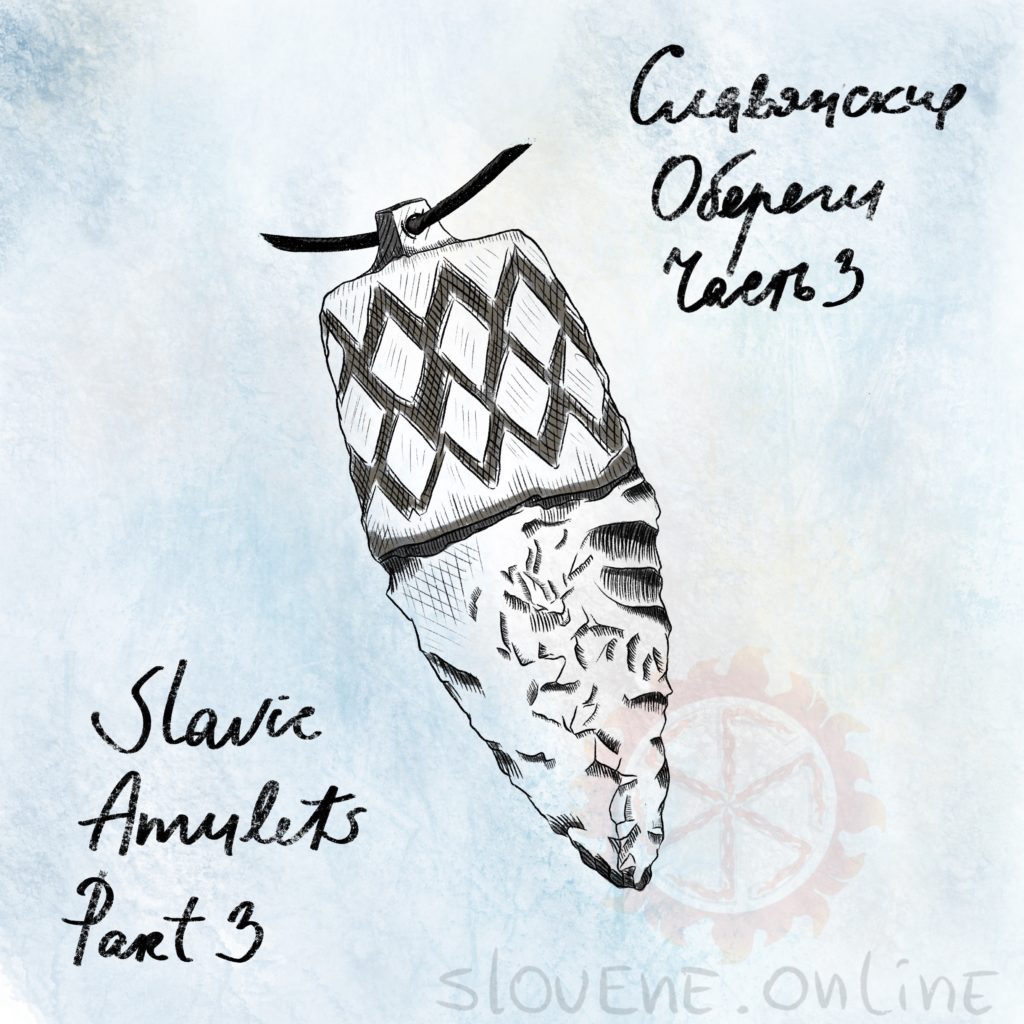
Slavic amulets – Part 2
When analyzing the semantics of the animal fangs amulets used in the Middle Ages, it is important to consider that the cult of some animals (bear, wolf, etc.) was in the system of mythological beliefs of various European nations and that it was associated with certain pagan gods (for instance the pair of Bear and Veles). Such an amulet could be worn as a sign of patronage from this god and be directly related to the functions and attributes that this god was endowed with.
We continue to familiarize you with the customs and beliefs of the ancient Slavic people, while working on the animated fantasy comic book series. In such posts, as if jumping forward in time, we shed light upon and help to understand the events that will occur in our story … 😉
Amulets were crafted by “knowing” people – healers, sorcerers, blacksmiths. Blacksmiths made amulets of silver or iron, bound belemnite stones, claws, shells, made silver images of animals and reptiles, agricultural tools and weapons.
Special rituals were observed for the amulet making process. Among the southern Slavs, for example, the amulet was often forged by a naked blacksmith at dead midnight from a horseshoe of a dead mare, in eastern Serbia – on Friday eve, with complete silence by a naked husband and wife.
Amulets were also made of leather and could be made in the form of a bag, which contained objects possessing magical protective properties.
Amulets were worn on a chain or on a lace around the neck (standalone or as part of a necklace), also attached to a belt, sewn onto clothes (on a shoulder, under an arm, etc.) and a hat (most often for children). Cattle amulets were hung around the neck, tail, inserted into the horn in a drilled hole.
Sources:
(1) E. A. Tyanina, “Amulets Made from Animal Teeth and Bones in Mediaeval Novgorod” / Archeological News. Vol. 17, 2011 (photo is also taken from this article);
(2) Levkievskaya E.E., “Slavic talismans and protective spells. Semantics and structure”, 2002;
(3) “Slavic Antiquities” – encyclopedic dictionary in 5 volumes by Institute for Slavic Studies of the Russian Academy of Sciences.
